Textiles from Ancient Peru
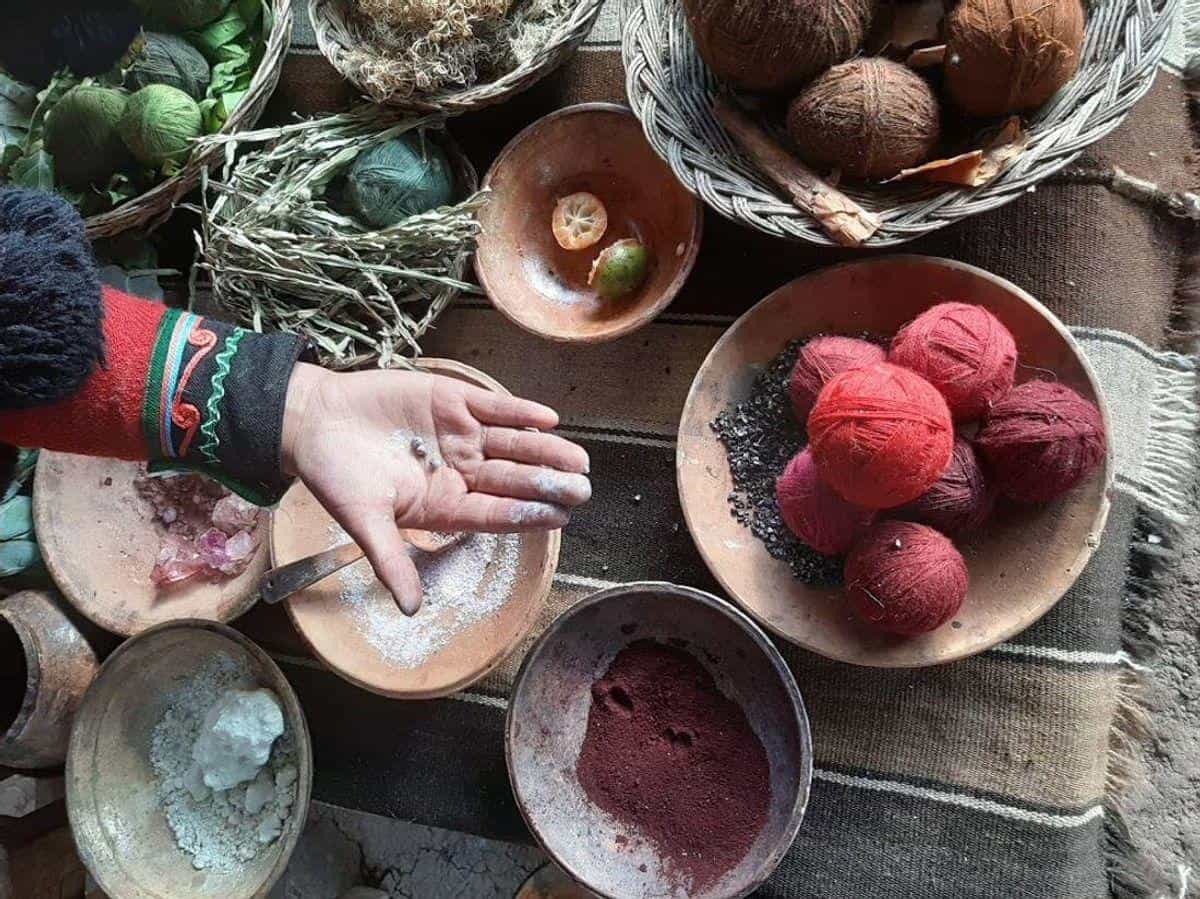
Peru, an Andean country, is famous for its high-quality cotton, alpaca fibres, and textiles. With vibrant landscapes and rich cultural heritage, visitors are drawn to its stunning colours. The region’s bright fabrics, known for their bold hues and exceptional durability, embody Peruvian tourism. Cusco, the textile capital of Peru, is well known for their craftsmanship and produce some of South America’s finest textiles. It’s a must-visit destination for those interested in exceptional fabrics.
About Ancient Peruvian Textiles
Andean culture has significantly shaped Peruvian textiles for thousands of years, creating a rich tapestry of vibrant colours and patterns. Traditional Peruvian clothing is still popular, showcasing intricate geometric designs that reflect the nation’s cultural heritage. The national colours of Peru, red and white, are emblematic of its unique Inca history, further enriching the narrative of its textile artistry. Experience the rich heritage of Peruvian textiles, showcasing a captivating journey from inception to finish. Discover the artistry and tradition woven into every piece, celebrating the culture and craftsmanship of Peru.
The History of Textile Design
The history of Peruvian textiles (Textiles del Peru) goes far beyond the Inca Empire, where archaeologists found evidence of weaving from ancient times. Ancient traditions are kept alive by passing knowledge and traditional weaving practices to the younger generation. Incas produce textiles from plant fibres, like cotton, or fur from highland mammals, like llamas or alpacas. Before the advent of weaving, Peru’s Indigenous people utilised fibres primarily by creating cords and nets. Generally, they wove the yarn on a wearable backstrap loom or by twining it, a hand-braiding technique.
When the Spanish arrived in Peru in 1526, they focused only on gold and glory, and they showed no appreciation for Inca culture and the valuable indigenous animals. They subjected these animals to abuse and crossbred llamas and alpacas. This led to a significant decline in wool quality and devastated the Inca nation and its livestock. Only in the 19th century did Sir Titus Salt, an Englishman, come to their rescue by reviving these species and restoring their value.
Peruvian textiles are known for their high-quality materials such as Alpaca wool and Peruvian Pima cotton and placed in categories and weaving techniques. Let’s take a closer look at the different types of textiles found in Peru.
Peruvian Textile Types
Alpaca Wool
Renowned for its softness and warmth, Peruvian Alpaca wool is one of the most famous textiles in Peru. Alpacas are domesticated members of the camelid family, derived from the wild vicuña. The extreme altitude contributes to the development of alpacas’ exceptionally dense fleece and thermal qualities. Peruvian Highland Wool is perfect for the harsh conditions of their natural habitat. Its unique fleece texture and appearance distinguish each of the two Alpaca species.
Suri Alpaca and the Huacaya Alpaca
- Suri Alpaca – The finest alpaca yarn comes from the rare Suri alpacas, which comprise about 10% of the global population. Suri fibres are smooth, long, and straight, resembling cashmere with their unique dreadlock appearance.
- Huacaya Alpacas are more popular for their soft, dense fleece. Huacaya fibres are densely crimped and elastic, offering a comforting texture similar to sheep wool.
Alpaca Vs llama and Vicuma
Alpacas and llamas, members of the camelid family, have distinct differences. Llamas are larger, weighing up to 400 pounds, while alpacas typically weigh around 150 pounds. Alpacas are slender with short, spear-shaped ears, whereas llamas have long necks, long noses, and banana-shaped ears. The vicuña, Peru’s national animal, is vital to its culture. Alpacas and llamas were generations ago used mainly as pack animals. Nowadays, Alpacas are raised worldwide for their valuable wool, and primarily exported to Peru for textiles. Both alpacas and vicuñas thrive in the high-altitude regions of central and southern Peru, reaching elevations of up to 15,000 feet.
Peruvian Pima Cotton
Often referred to as the “Cadillac of cotton,” Peruvian Pima cotton is renowned for its superior quality. Grown in Peru’s coastal regions, its fibres are finer and twice as long as standard cotton, resulting in a smooth, strong, and durable fabric. This makes it a popular choice for luxury apparel and bed linens. Additionally, Pima cotton is known for its excellent colour retention, and remains vibrant even after multiple washes.
Ayacucho Textiles
What are Ayacucho textiles? Ayacucho textiles encompass a range of handmade creations, particularly tapestries and embroideries, originating from the Ayacucho region of Peru. Renowned for their intricate designs and vibrant colours, these textiles reflect the area’s rich cultural heritage. The craftsmanship involved in creating Ayacucho textiles involves traditional techniques passed down through generations, showcasing the skill and artistry of the local artisans.
What to look for when buying Peruvian textiles
- Quality: When one purchase Peruvian textiles, several key factors consider the following factors. Firstly, there are high-quality fibres like alpaca, llama, and cotton. Alpaca is durable, warm, and soft.
- Craftsmanship: Pay attention to the weaving technique and overall textile construction. Handwoven items often showcase superior craftsmanship compared to machine-made products.
- Design and Colour: Traditional Peruvian textiles often feature intricate patterns and vivid colours. Understand the significance of the designs, as they may represent specific cultural stories or regional characteristics.
- Authenticity: Ensure that local artisans produce the textile. Look for certifications or labels that confirm the item’s origin and craftsmanship to avoid mass-produced replicas.
- Ethical Practices: Research the suppliers to ensure they support fair trade practices and provide fair wages to artisans.
- Care Instructions: Different materials may require specific cleaning and care. Inquire about the maintenance to ensure your textile remains in good condition over time. By considering these aspects, you can make a well-rounded choice.
- Certification labels: Labels demonstrate fair trade practices, and authenticity can assure you of the quality of your purchase.
Where to Buy Textiles in Peru
Local artisans in the Sacred Valley create intricate hand-woven textiles using ancient techniques at the Chinchero cooperatives. Several weaving cooperatives operate in this region of Peru, including Awac Phuna Weavers, Qusi Qoylloc Spinners, Puskariy Tika Spinners, as well as Chinchero, Pisac, and Ollantaytambo. Visitors to these cooperatives can learn about the cultural significance of weaving in Andean communities, understand the production process, and purchase unique textiles directly from the artisans.
Chinchero Textiles
A good place to buy unique textiles is in the village of Chinchero. Located in the Sacred Valley between Cusco and Urubamba, it is famous for its high-quality textiles. The Independent Kantu Weaving Centre supports local women weavers who use traditional backstrap techniques.
Weavers in Chinchero utilise various methods, such as kelim, tapestry, twining, intricate embroidery, and natural dyeing. Visitors can observe these traditional processes. The red and white Peruvian flag symbolises sacrifices for freedom and peace, themes evident in the vibrant fabrics produced by local artisans.
Alpaca Shearing Methods
Shearing an Alpaca is a specialised trade with specific techniques tailored to the unique characteristics of alpacas, llamas, and baby alpacas. Skilled shearers carefully move to gently remove the fleece, preserving the integrity of the animal’s skin and fibres.
After shearing, the fleece gets meticulously sorted into batches based on thickness, with the finest strands considered the most valuable. Among these, the exquisite fibres from vicuña baby alpaca stand out, renowned for their exceptional softness and quality, making them highly sought after.
Washing Methods in Peru
Historically, the Inca civilisation utilised the Sakta root, a natural and gentle detergent, for washing alpaca wool. Washing the Alpaca wool with Sakta root is a traditional method that cleanses the wool and preserves its delicate fibres. The root is versatile and is also used by Peruvians for personal care, such as natural hair shampoo, demonstrating its significance in both textile and daily life in Peru.
Colouring the Textiles
The Indigenous Incas of Peru developed sophisticated methods and techniques, passed down through generations, to dye yarn and wool with natural ingredients. Their approach relies solely on natural products to produce vibrant colours, and Peru Colour Methods include mineral salts to help set the colours. The dyeing process involves creating a mixture combined with water and boiled for several hours whereafter the yarn is placed in the sun to dry out.
Textile Del Peru Colours
- Peru Red: For Peruvians, red represents bravery, power, passion, and energy. The intense carmine red is prominent in Peruvian textiles and the national flag. Cochineal, a tiny red bug found on prickly pears, is used to produce carmine, a natural red dye. At a textile cooperative, you can observe how crushing the cochineal creates a vivid red paste.
- Indigo Blue: They use Tara, Indigo, and Kimsaq’ucho for different shades of blue.
- Peru Orange: The red paste turned orange when she came in contact with the mineral stone. Citric acid causes the paste to change to orange.
- White and Yellow: Natural Alpaca wool. Alpacas come in 22 natural colours, with the purest natural colour being white. They use Q’ulle’s and Qaqa Sunka’s flowers for shades of yellow.
- Green, Purple and Grey: Chapi plant, Qaqa Sunka, Yanali, or Mutuy, Nununqa will produce the colour Green. Purple Peruvian corn, Copper, or iron oxide for shades of Purple.
- Brown: Incas used Nogal leaves and seeds to produce brown or Qaqa Sankha.
- Black Yarn in Peru: They use natural black Alpaca wool for black.
Spinning versus Weaving
Both weaving and spinning are distinct processes. While spinning focuses on creating yarn from fibres, weaving combines those yarns to produce fabric. Weaving and Spinning turn raw fibre into functional textiles Del Peru.
Weaving
What is Weaving in Textiles? Weaving is the process of interlacing two sets of yarns to create fabric. It transforms individual threads into textiles by layering Alpaca yarn or wool crosswise. The longitudinal yarns are called the warp, while the transverse yarns are called the weft. Weaving can be done using hand-operated looms or automated machines, resulting in a diverse range of textile products, from simple fabrics to intricate patterns.
Spinning
A spindle or a spinning wheel is used to convert raw fibre strands into yarn. A spindle involves twisting fibres by hand to create yarn, while a spinning wheel offers a more efficient method for producing longer lengths of yarn. Both methods require skill and practice to achieve the desired texture and thickness.
What is Roving Peru yarn?
Roving Peru yarn is a type of fibre that is known for its softness and warmth. It is made from high-quality natural fibres, often sourced from Peru, which are processed to create a versatile yarn suitable for various knitting and crocheting projects. This yarn is popular among crafters for its ability to be easily worked with, making it ideal for creating garments, accessories, and home decor items. Its unique texture and vibrant colours can add a special touch to any handmade piece.
Quality of Textiles from Peru
Alpaca Wool & Alpaca Fur
Alpacas are known for their stunning variety of 22 natural colours, and their baby Alpaca wool is particularly celebrated for its exceptional softness and quality. Textiles del Peru provides a selection of unique Alpaca blankets that showcase the rich craftsmanship and artistry inherent in Peruvian textile traditions.
When comparing alpaca wool and fur, it’s essential to recognise their different applications and characteristics. Both derived from domesticated species, although the characteristics from Alpaca fur and wool make them stand out against other fibres. In addition to their exceptional softness, warmth, lightweight, and hypoallergenic properties, alpaca fibres are gentle.
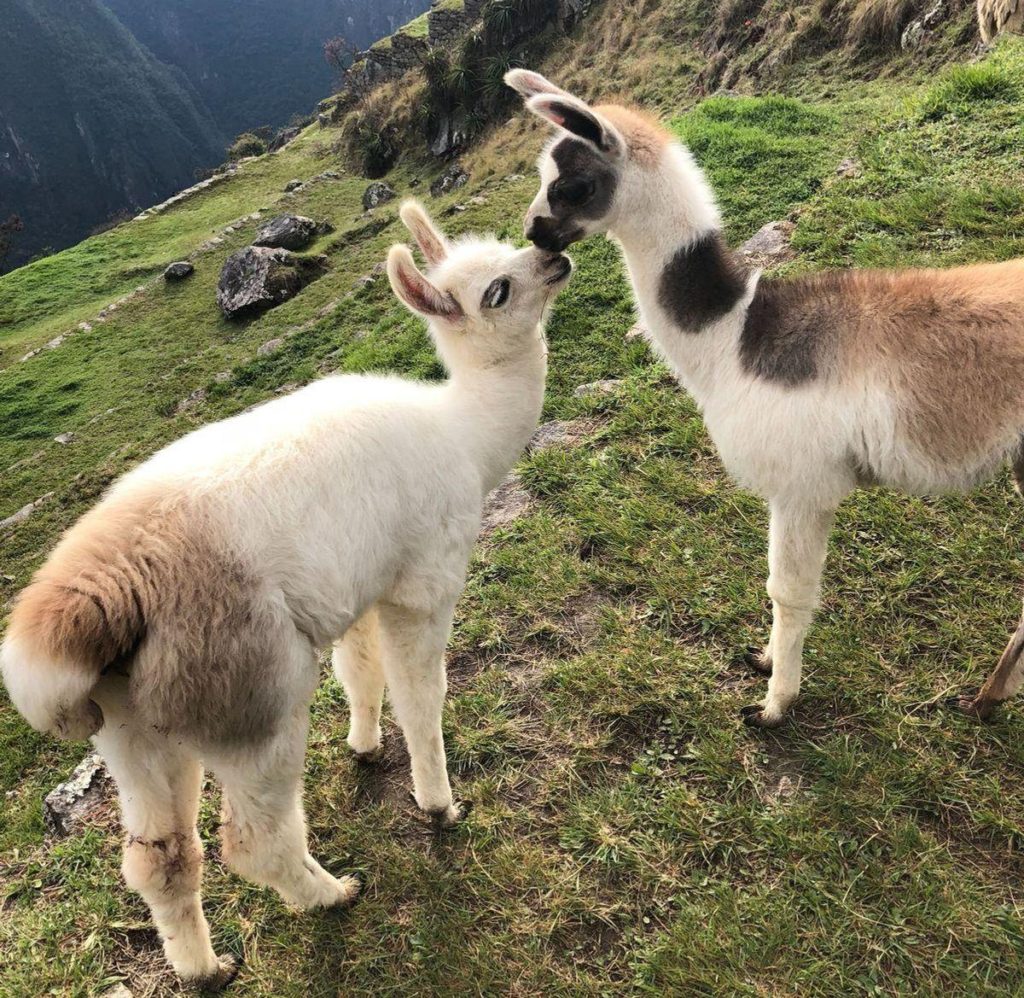
What is Baby Alpaca?
A baby alpaca is commonly referred to as a cria. The wool of a baby alpaca is sourced primarily from specific areas of its body, including the chest, neck, and butt region.
Berroco ultra Alpaca wool
Top-quality superfine Alpaca wool blended with Peruvian Highland wool becomes luxurious Berroco Ultra Alpaca.
Alpaca Silk Yarn
Alpaca silk yarn is a luxurious and unique type of yarn made from the fibres of alpacas blended with silk. Known for its softness, warmth, and lightweight qualities, Alpaca wool is an excellent choice for knitting and crocheting projects.
Alpaca vs Cashmere
Cashmere and Merino wool are lighter, softer, and stronger than Alpaca wool but tend to provide less warmth.
The Alpaca wool price
Vicuña wool is one of the world’s rarest and most expensive fibres. Regarding Alpaca wool, prices typically range from $50 to $80 for a standard jersey.
In contrast, a jersey made from baby Alpaca fleece can be priced between $80 and $100. However, Vicuña garments are the most costly, with a Vicuña sweater commonly priced around $600.
Textile Companies In Peru
Peru has a vibrant textile industry (Empresas Textiles Del Peru) characterised by diverse textile companies contributing significantly to the local economy and the global market. Textile Companies of Peru are known for their expertise in producing high-quality fabrics, including traditional textiles that incorporate rich cultural heritage and contemporary designs.
The charming Cusco city in southeastern Peru is known as the Textile Capital of Peru. Besides exceptional craftsmanship, Peru’s textile companies are the finest in South America and hold the title of the world’s largest exporters of luxurious alpaca wool. Want to know where to buy Peruvian textiles in Peru? Here are some textile stores in Peru.
- Alpaca 111 stores have multiple locations in Peru, including Lima, Cusco, and Arequipa. They are known for selling high-quality alpaca wool products with stores in Cusco, Miraflores, Lima, and the Arequipa airport.
- Textiles Camones S.A., located in Puente Piedra, Lima, Peru, specialises in cotton and other blended fabrics and is known for its high-quality textile production.
- Inca Tops Arequipa is at 348 Avenida Miguel Forga, half a block from the Plaza de Armas (the city’s main square).
- Cotton Peru manufactures knitted cotton garments. They are located in Lima and focus on export.
- Tejido & Colortex in Lima is a leading Peruvian textile export company (Empresas textiles Del Perú).
- PIMA Cotton Clothing in Lima is a clothing manufacturer that produces top-quality garments for exportation.
Citation: “Some parts in the article were edited using Grammarly’s AI power tool for spelling, grammar and style.”
Pin to Pinterest for use later
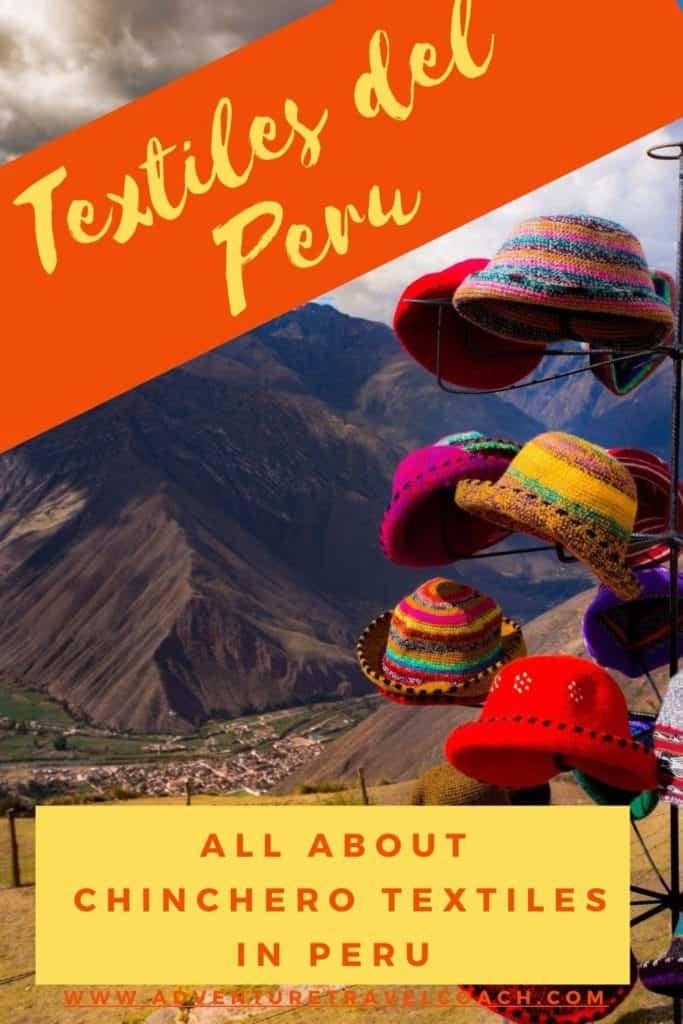
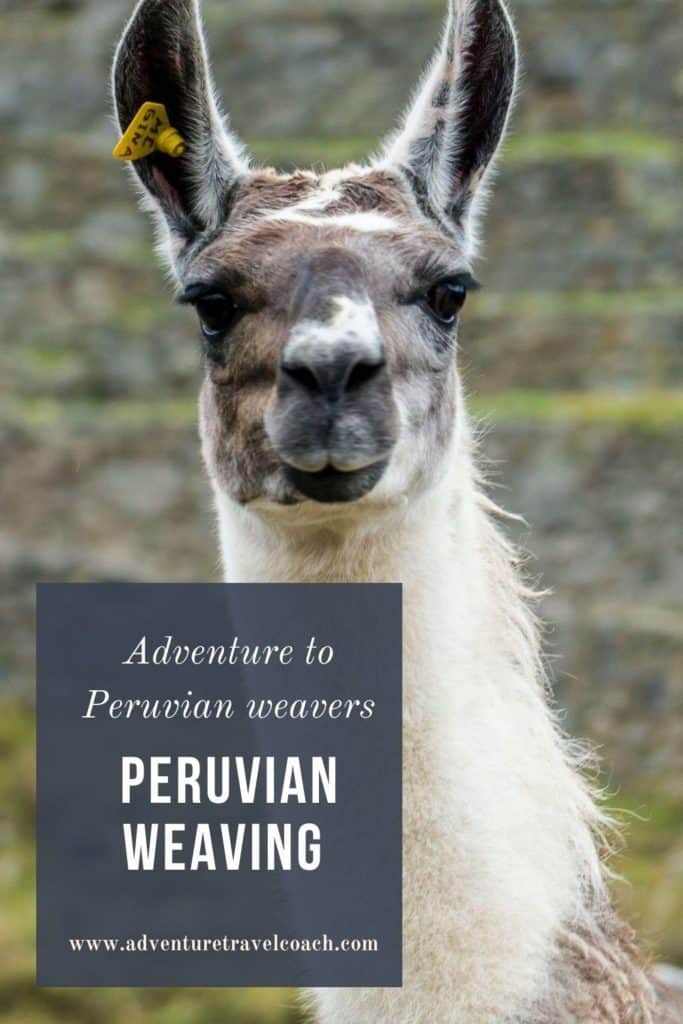

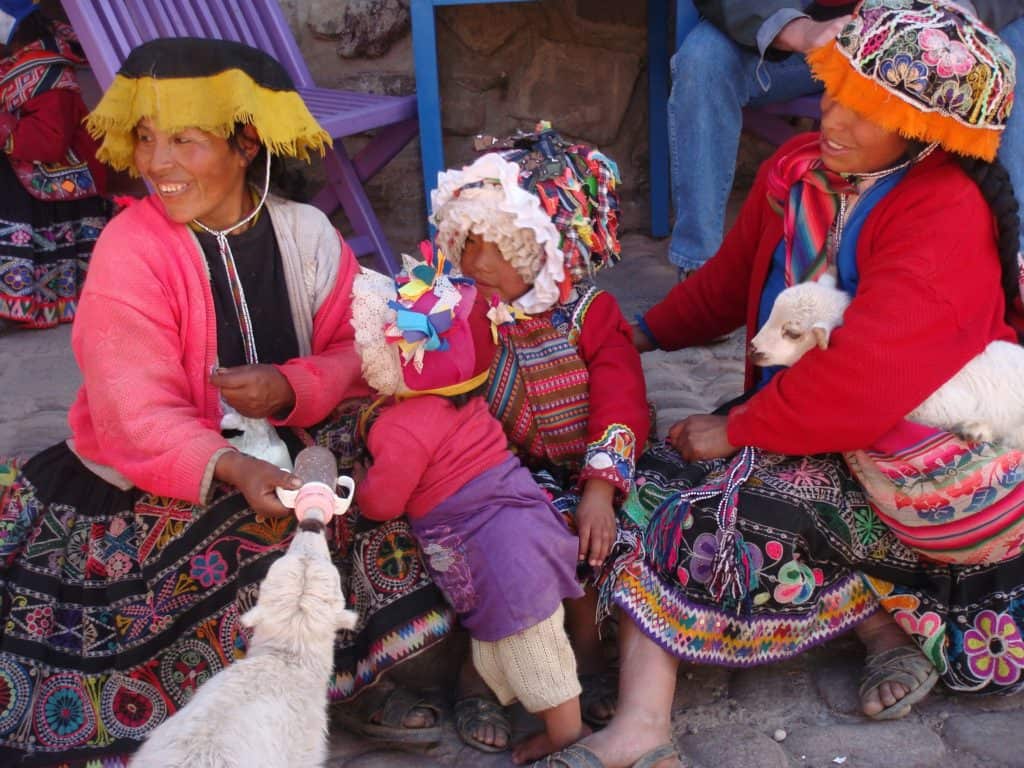
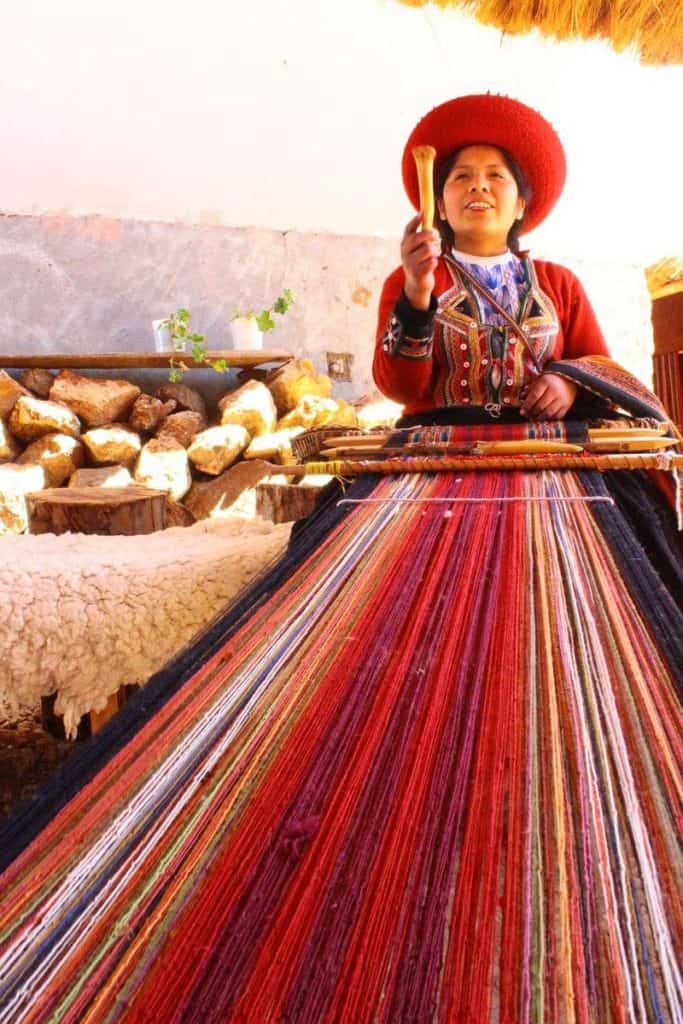


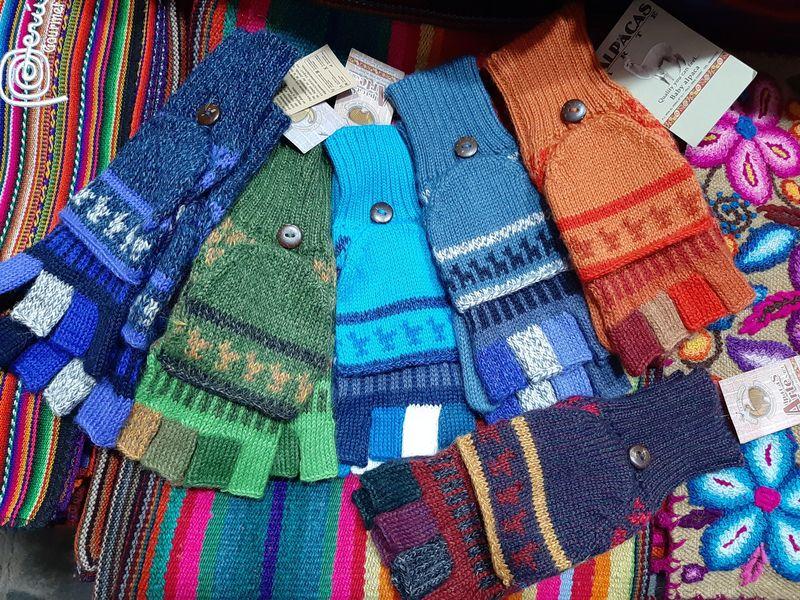
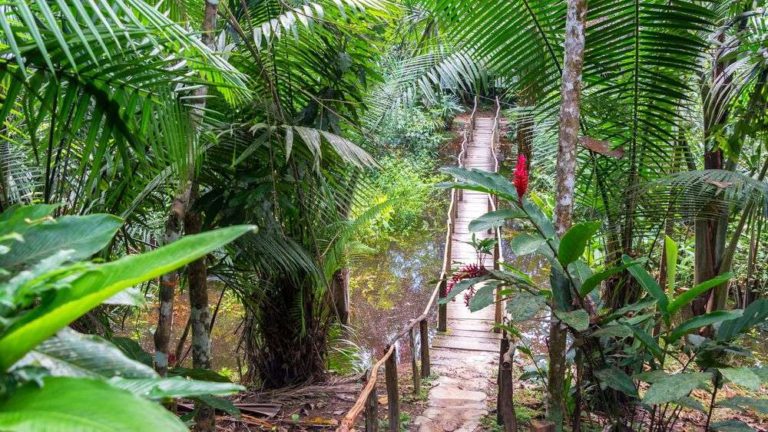
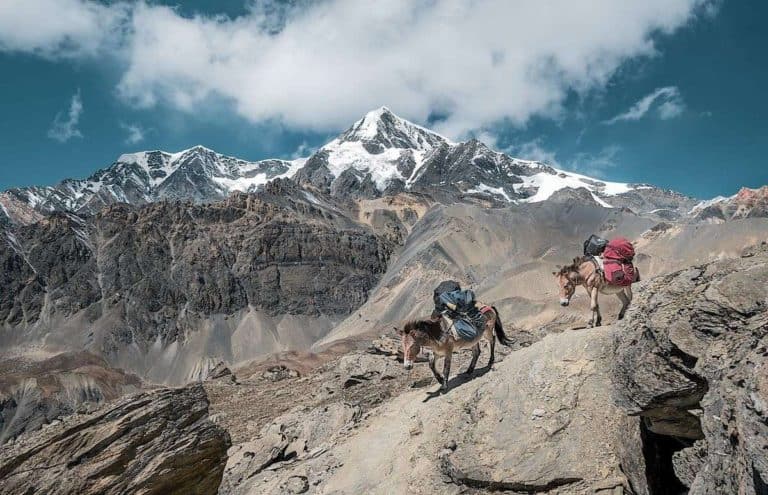
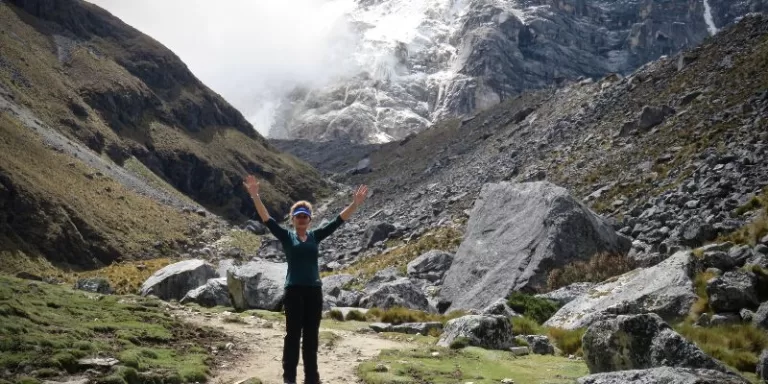
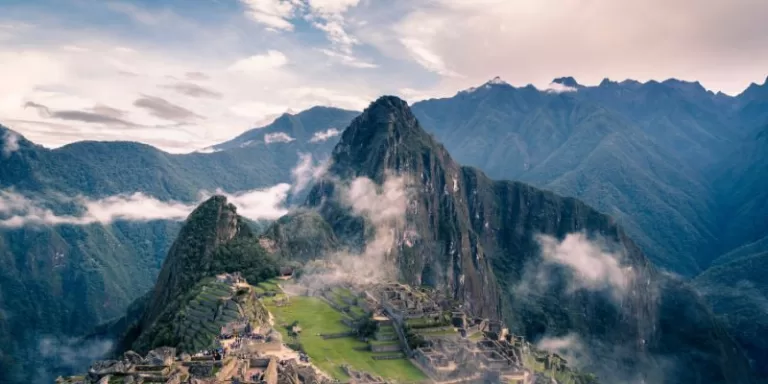
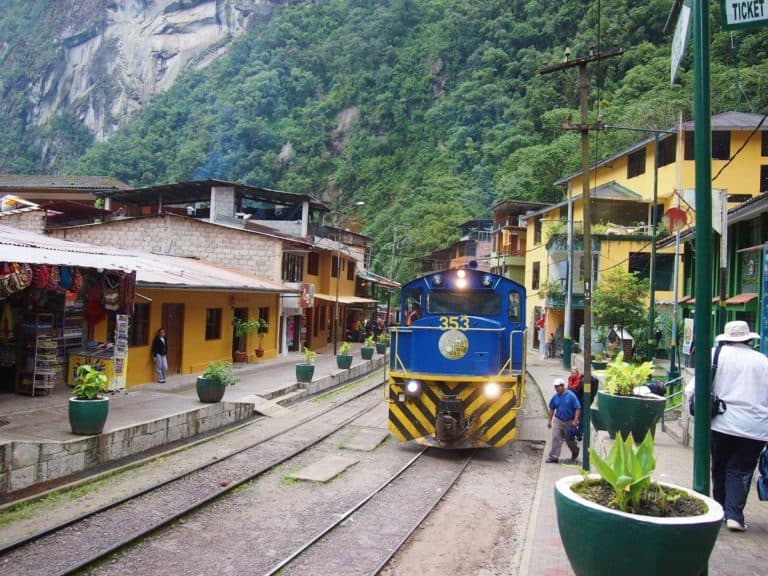
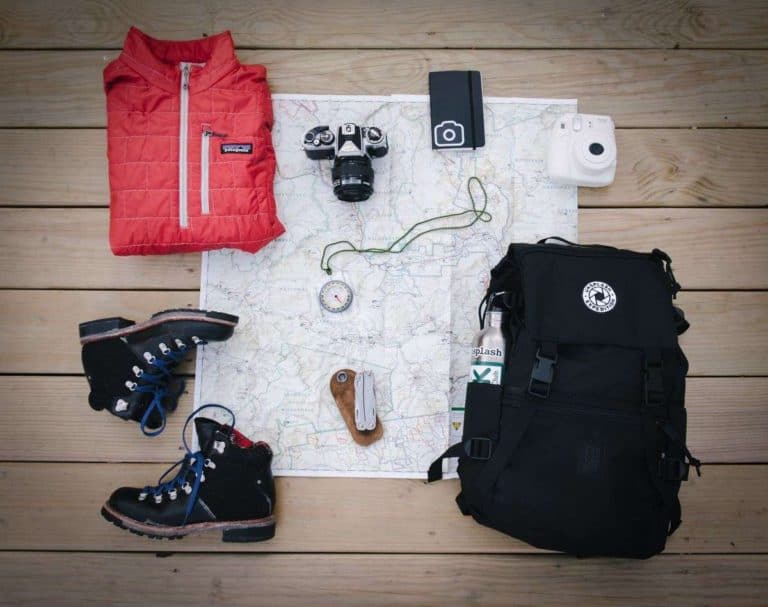

Yes I also can’t wait to get back to the colourful land of the friendly Inca nation.
This post brought back some good memories of my Peru trip. I love the bright colors of the textiles. I bought a purple alpaca scarf and continue to use it for all my winter getaways. Would love to return to Peru again!
Glad you’ve enjoyed the post. Must say when I wrote the post, I relived every moment and want to go back!
Glad you enjoyed it, and yes, the vibrant colors of everything in Peru are amazing!
Enjoyed reading this blog post! Love the descriptions to differentiate between Alpacos and Llamas. Peruvians seem to love the vibrant colors in all their woven stuff like hats and wraps. Interesting post! 🙂
This is so interesting to learn all of the info and techniques behind this! It just makes me want to visit Peru even more haha 🙂 All of the alpaca wool goods are beautiful!
Yes very vibrant – I love it!
Sorry you missed it but hopefully you’ll go next year. Peru is amazing!! thanks for your time reading my post and glad you’ve enjoyed it.
Yes they are very clever with all the natural stuff they use. Thanks for your comment glad you’ve enjoyed it.
Yes you need to go – Peru is truly amazing!
Thank you so much for your comment.
We unfortunately missed our visit to Peru this year. I would surely want to check out the local textiles. I did not know that alpaca came in 22 natural colours. But I do love all the bright colours.
I love love love my alpaca hat! But the Peruvian colors are so vibrant!!!
Wow, this is such a detailed article. I had heard about Peru textiles, but never knew about them in this detail. I am hoping that they are now managing their textile industry well. I believe the Berroco ultra Alpaca wool is good in quality, though they look a bit expensive. A nicely written piece.
I love the colours and textures of Peru. It’s definitely something I want to see in person one day. The alpaca wool is wonderful and I’d no idea about the different types before.
Great read on the textile industry in Peru! It was fascinating to learn about the natural ingredients used to dye the wool, it’s amazing how vibrant they can get the colors. Thanks for the interesting post!